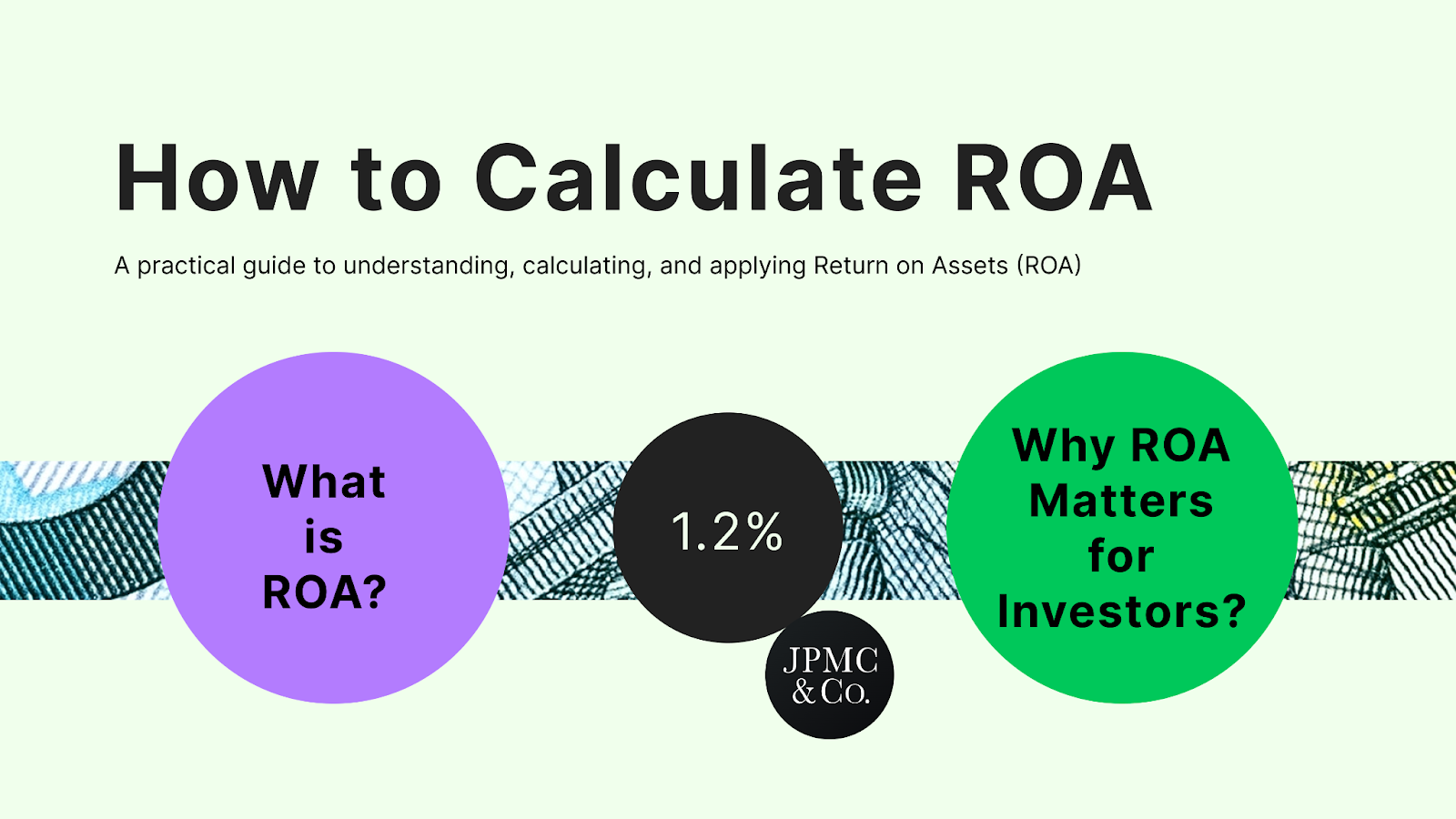Return on Assets (ROA) is a foundational financial ratio used to assess how effectively a company utilizes its asset base to generate net earnings. As a key performance indicator in both equity research and corporate finance, ROA bridges the income statement and balance sheet to reveal how well management converts assets into profits.
From an investor’s standpoint, ROA functions as an efficiency benchmark that transcends company size and capital structure, making it particularly useful when comparing companies across a sector. It is calculated by dividing Net Income by Average Total Assets over a given period..
In this guide, we’ll explain how ROA is calculated, how to interpret it, and why it’s an essential component of sound financial analysis for both short-term evaluation and long-term investment strategy.
What is Return on Assets (ROA)?
ROA is a financial ratio that shows how much net income a company generates for every dollar of assets it owns. It is a key indicator of operational efficiency and is often used to compare companies within the same sector.
Formula: ROA = Net Income / Average Total Assets

Net Income: Found at the bottom of the income statement. This is the company’s profit after taxes and expenses.
Average Total Assets: Calculated by averaging the total assets at the beginning and end of the period (usually a fiscal year). It includes both current assets and long-term assets such as property assets, intangible assets, and specialized equipment.
Example: If a company earns $1 million in net income and has $10 million in average total assets, its ROA is:
ROA = $1,000,000 / $10,000,000 = 10%
This means the company earns 10 cents for every dollar invested in assets.
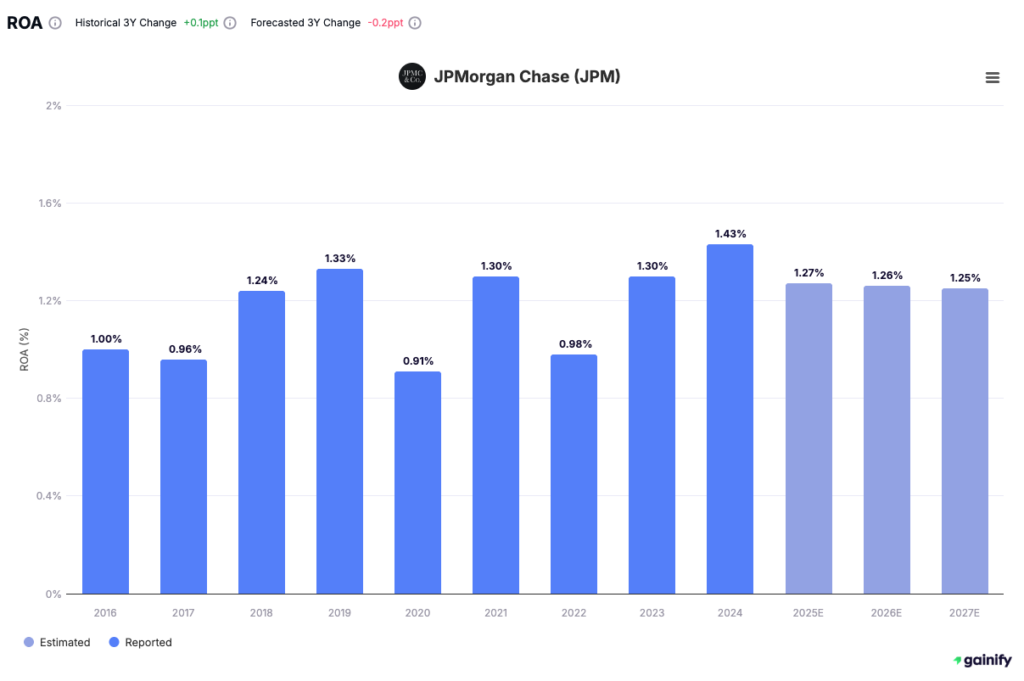
Why ROA Matters for Investors
ROA helps answer a fundamental question: How efficiently is a company deploying its resources?
- Efficiency: A higher ROA indicates that a company is generating more profit relative to its asset base. This highlights strong asset efficiency, especially important for asset-intensive companies such as major oil companies, banks, and auto companies.
- Comparability: ROA enables comparisons across companies of varying sizes and capital structures. It is particularly useful when analyzing asset-light companies like a software company or service business versus asset-heavy ones like an airline company or utility companies.
- Profitability Lens: ROA provides insight into the profitability of assets by combining data from both the income statement and the balance sheet accounting equation. It offers a more comprehensive picture than other ratios in business.
- Strategic Insight: ROA can uncover capital-intensive companies with strong operational incomes or asset-light companies achieving exceptional returns due to efficient resource allocation and effective property management.
Capital Allocation Clarity: Companies that maintain or grow ROA while expanding their asset base (through asset purchases or additional assets) tend to have disciplined and efficient management. This is essential in avoiding poor capital investment decisions.
Key Considerations When Using ROA
ROA is a useful tool, but like any profitability ratio, its interpretation depends heavily on context:
- Industry Norms: ROA varies based on industry averages. For example, a retail industry business may show a different ROA compared to a banking industry or gas industry firm due to the nature of their economic resources and cost structures.
- Capital Intensity: In capital-intensive businesses like infrastructure or manufacturing, ROA tends to be lower because of expensive assets and higher capital expenditures. This should not be confused with inefficiency.
- Timing Adjustments: Always use average assets over the time period in question rather than year-end balances to get an accurate measure of performance between periods. This approach accounts for changes due to inventory purchases, the sale of vehicles, and depreciation of equipment.
- Accounting Differences: Consider how differences in financial reporting frameworks (GAAP vs. IFRS), asset impairments, or depreciation affect total asset values and income assumptions. Using unbiased content and reputable publishers or white papers can help ensure accurate, standardized comparisons.
- One-Time Events: Factors such as the sale of equipment or property investments can create temporary spikes in income level and distort ROA. Understanding these events is vital for making informed decisions.
ROA vs. Other Profitability Metrics
Metric | What It Measures | Formula |
ROA | Net income generated per dollar of assets | Net Income / Average Total Assets |
Return on equity capital | Net Income / Shareholders’ Equity | |
ROIC | NOPAT / (Equity + Debt – Cash) | |
Gross Margin | Profitability before operating costs | (Revenue – COGS) / Revenue |
Real-World ROA Examples
Understanding how top companies perform on ROA offers valuable perspective. Here are three well-known firms across sectors, each illustrating different ROA dynamics:
- Johnson & Johnson (JNJ): ROA ~12–13%
Strong performance from diversified healthcare products with solid asset efficiency in a moderately capital-intensive business model.
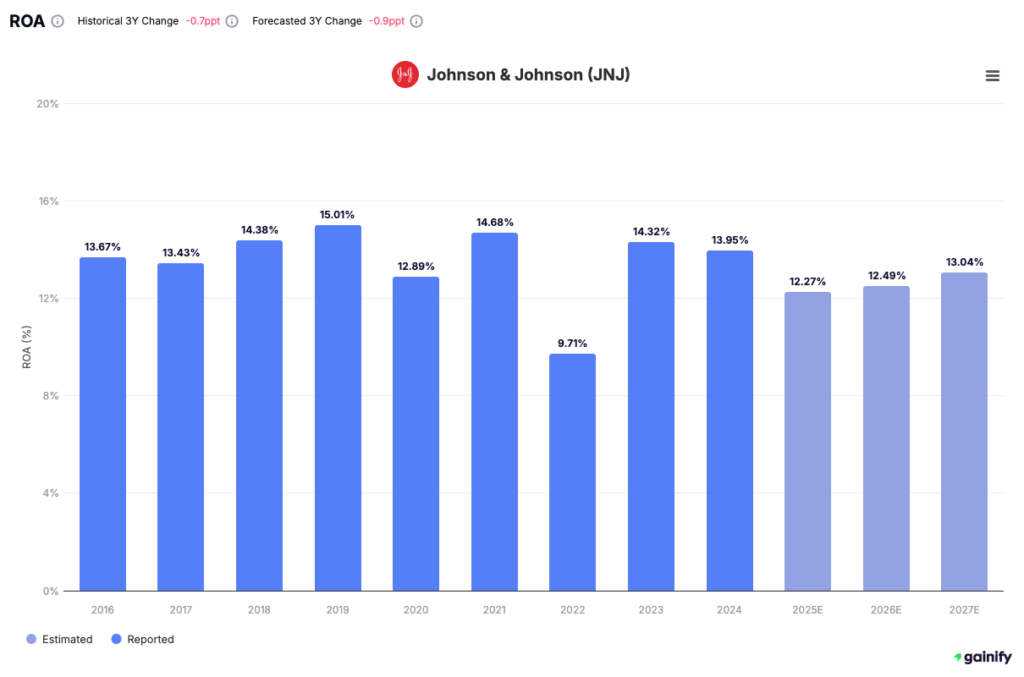
- Microsoft Corp. (MSFT): ROA ~18–21% – A leading tech company with scalable operations and a lean asset structure. Illustrates how asset-light companies can achieve high returns using fewer resources.
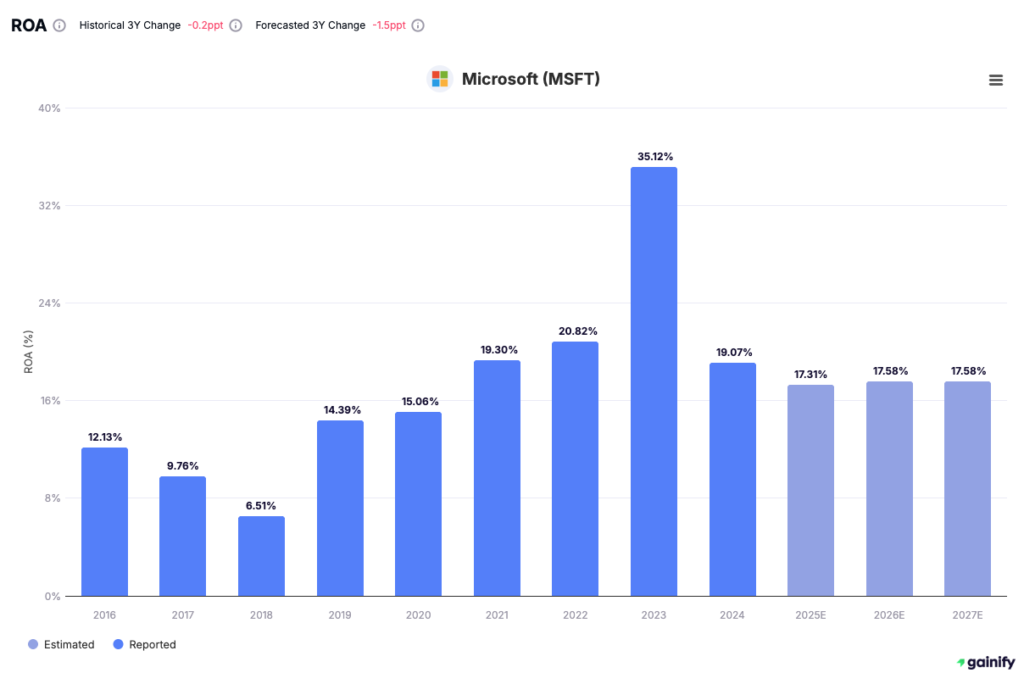
- Bank of America (BAC): ROA <1.0%
Typical for banks with large property assets, current investments, and accounts receivable tied to customer deposits and loans. Despite low ROA, this reflects the nature of the banking industry.
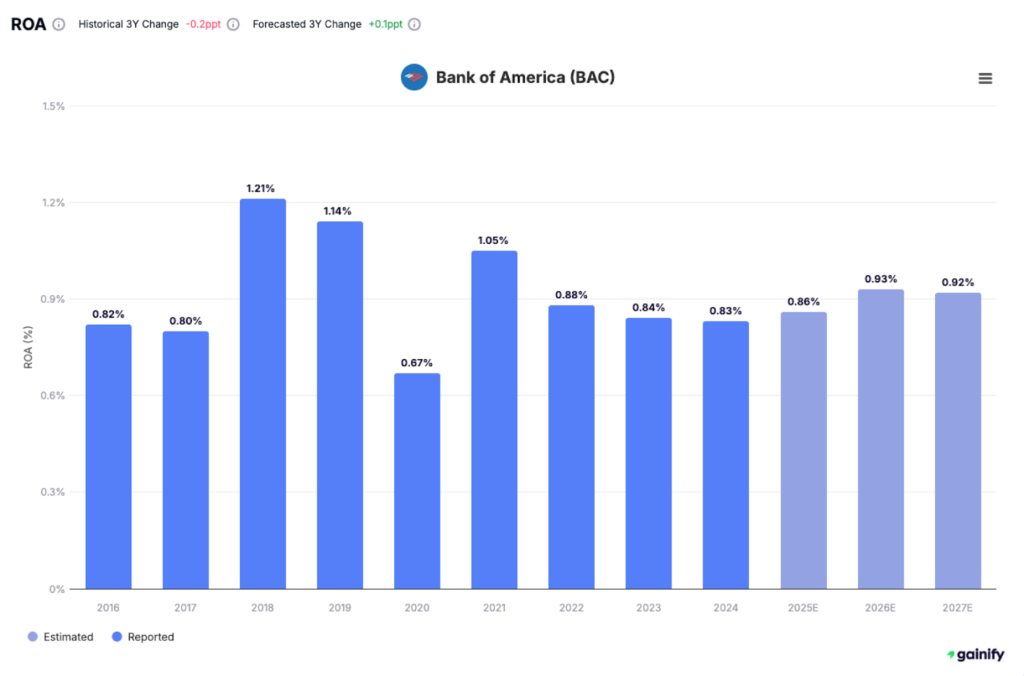
These companies highlight how to apply ROA in real-world scenarios and make performance comparisons among peer companies within their respective sectors.
Final Thoughts: Using ROA in Investment Decisions
ROA is more than just a number. It reflects the financial health of a business, the efficiency of its management team, and how well it converts investment into profits. For better insights:
- Look for consistent ROA over an extended time period
- Compare ROA to industry competitors for relative performance
- Favor businesses with low-return assets that still generate strong cash return
- Use return on assets calculator tools for personal finance purposes or investment opportunity screening
By mastering ROA, investors can more confidently assess business quality, allocate capital, and uncover companies delivering high returns with smart resource management.
